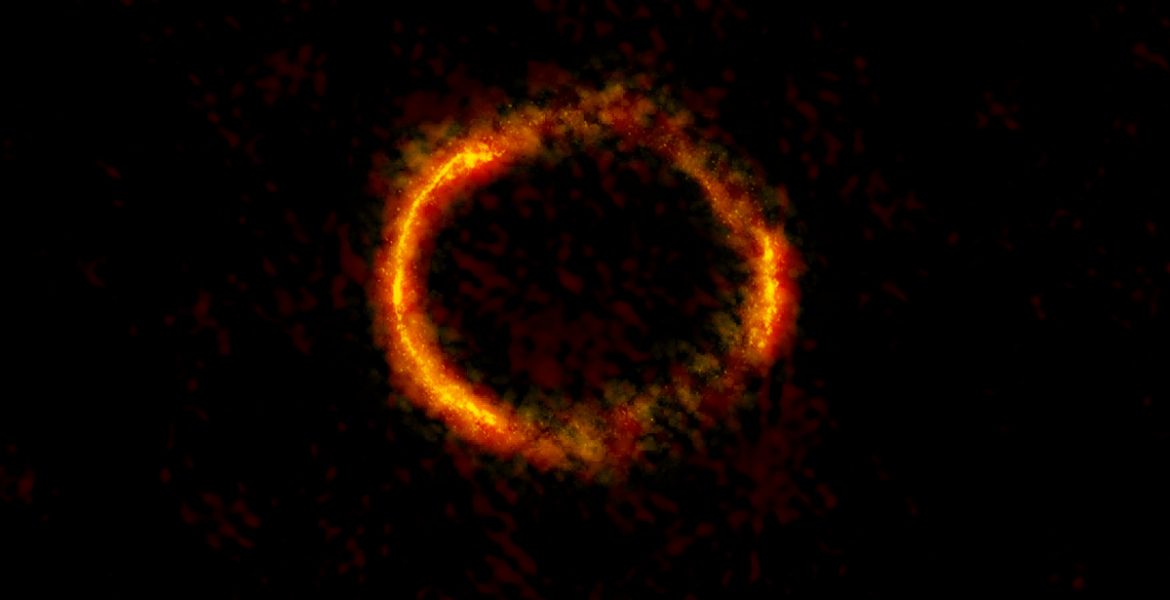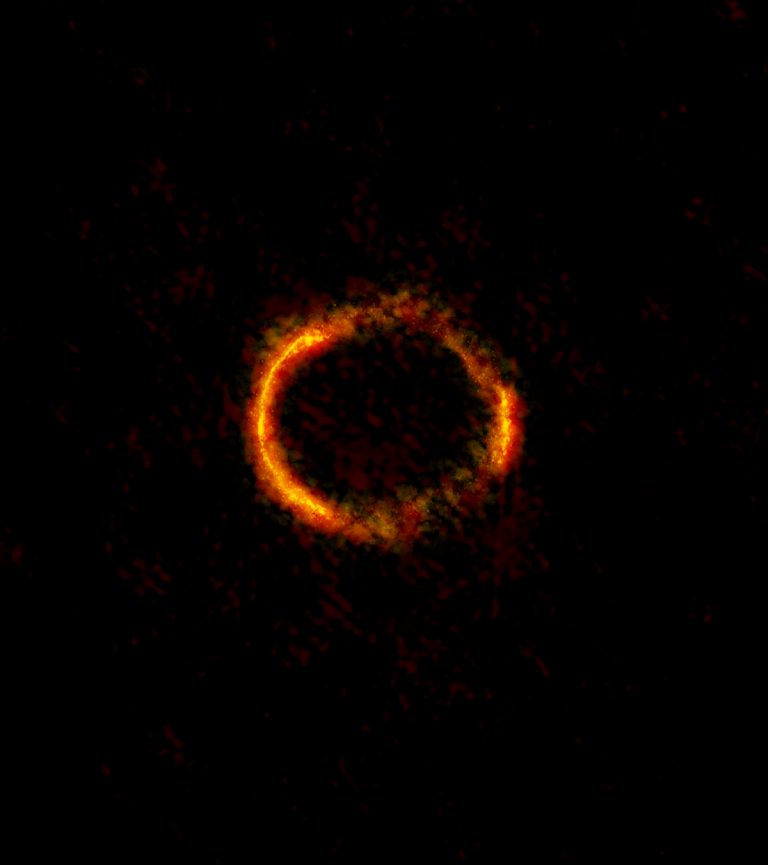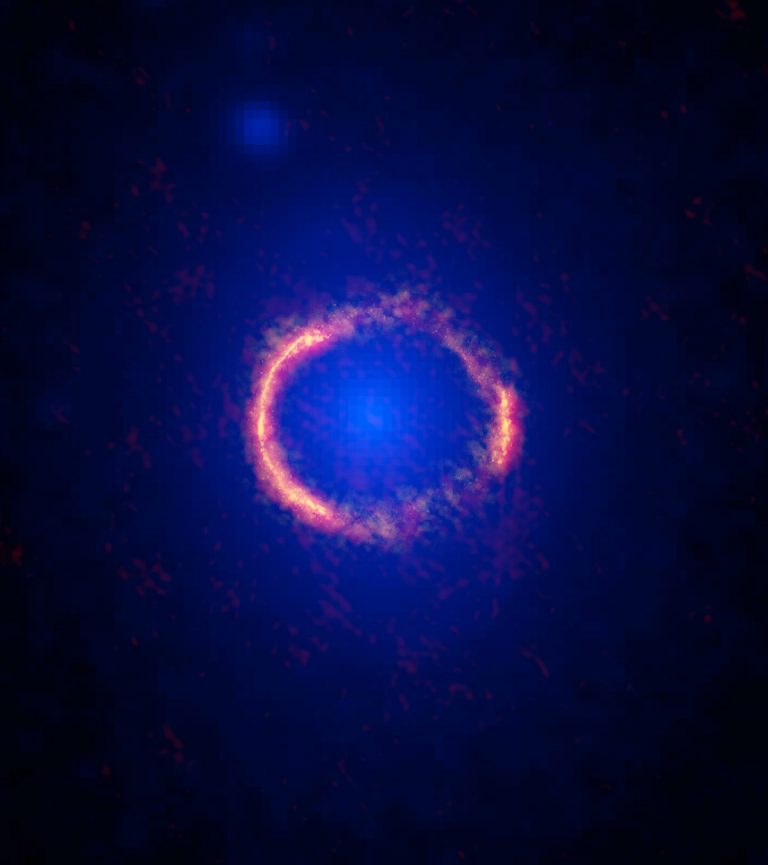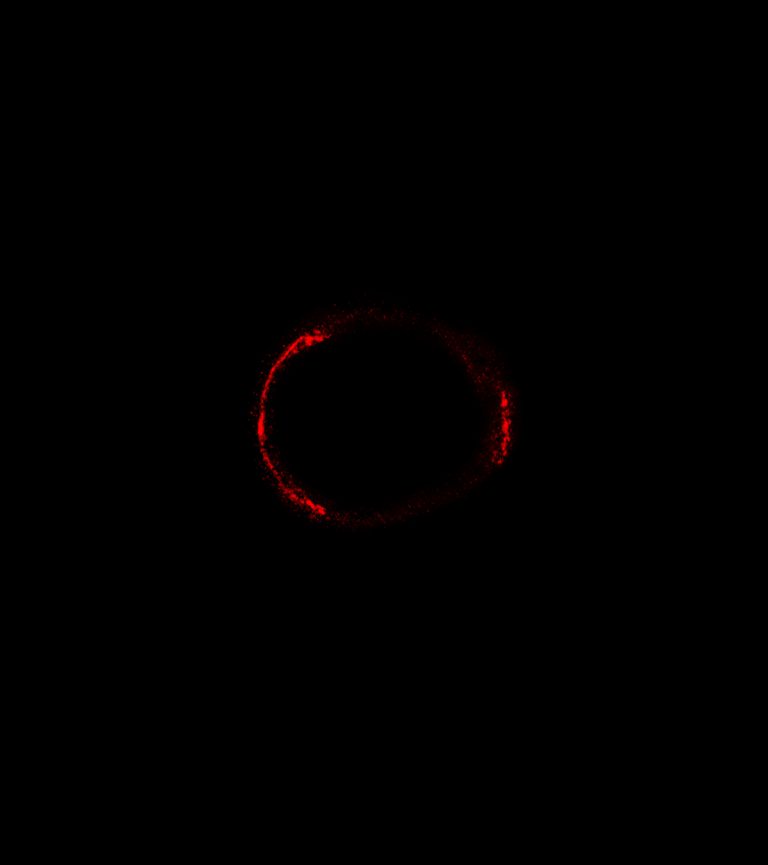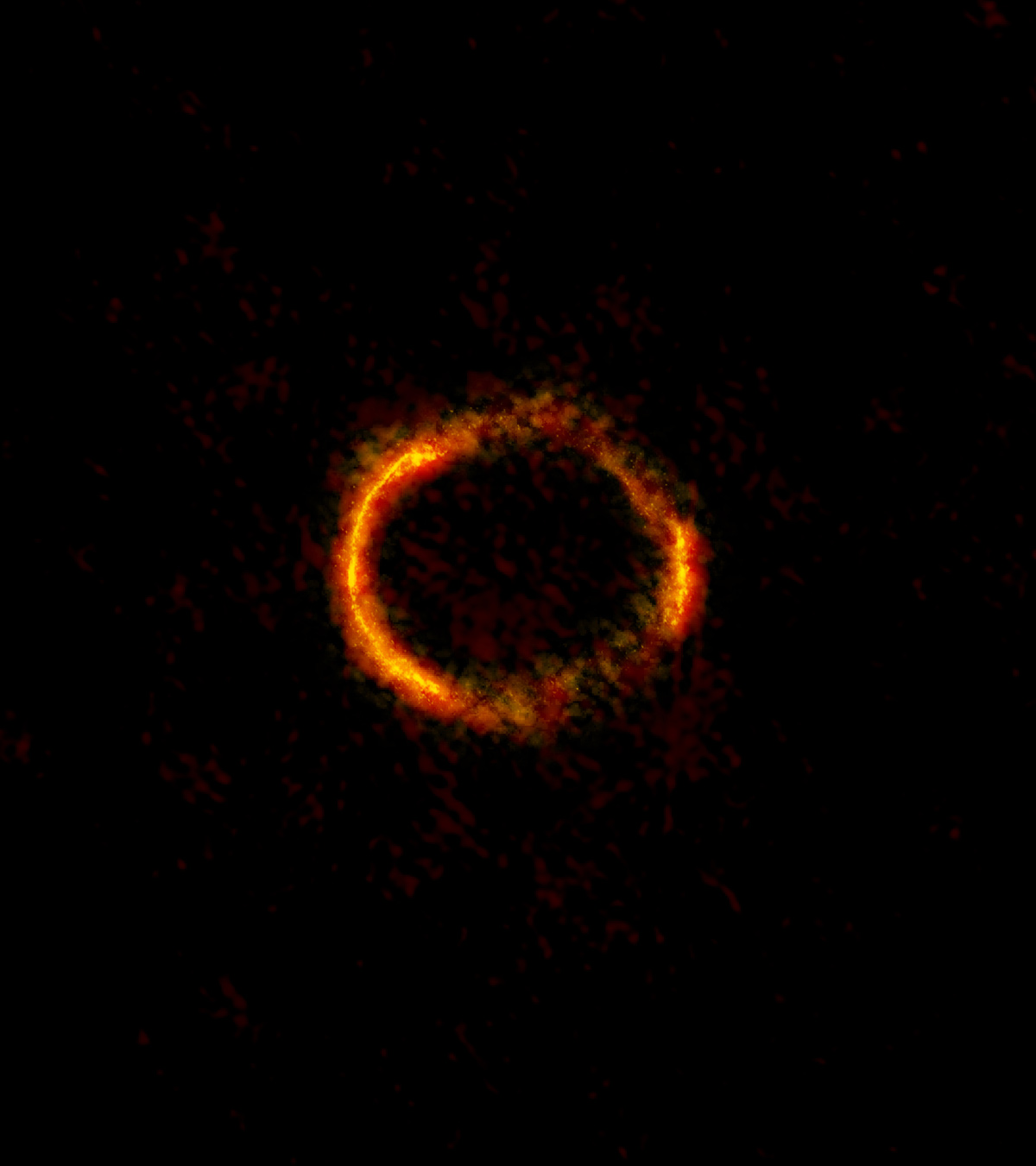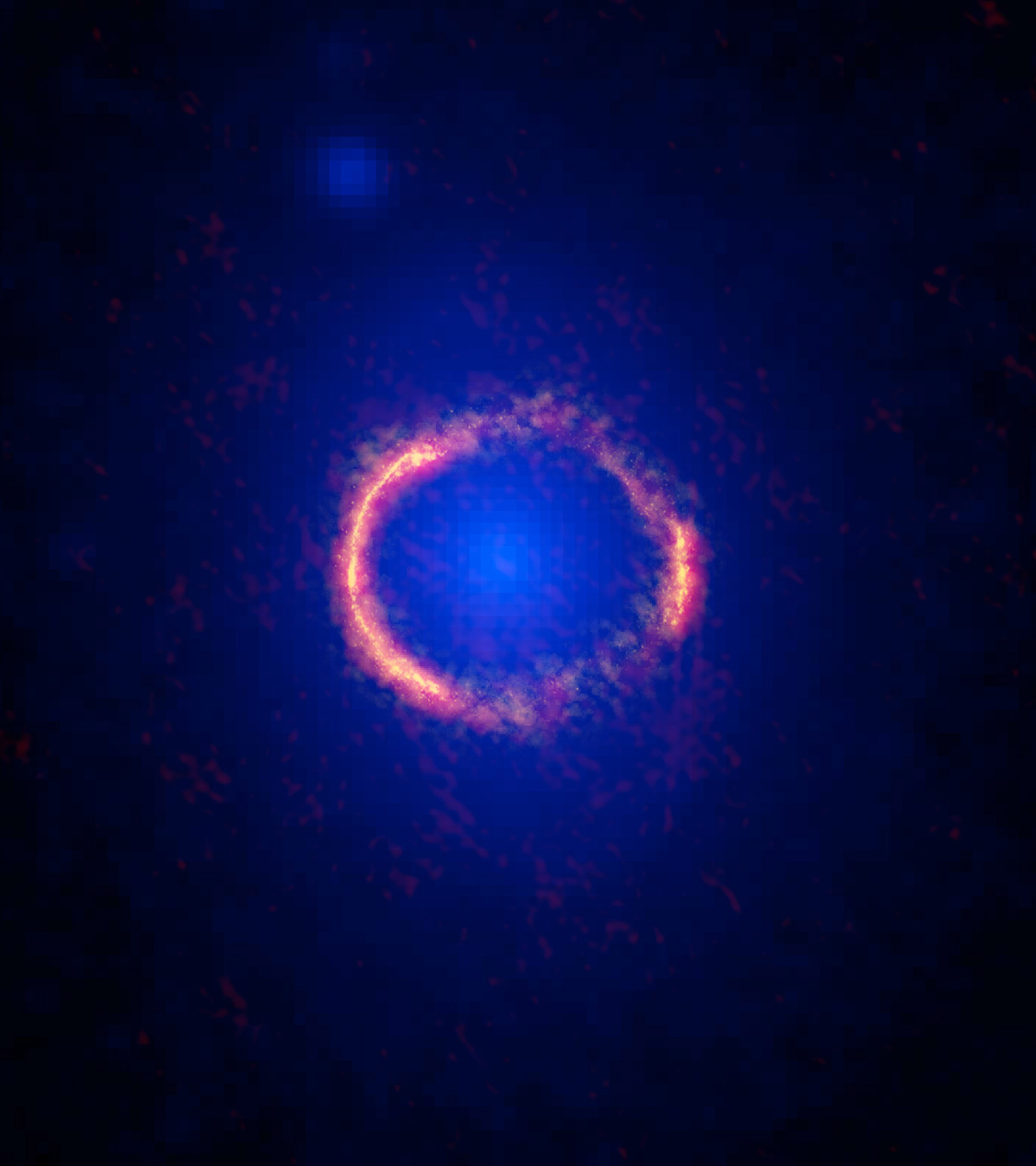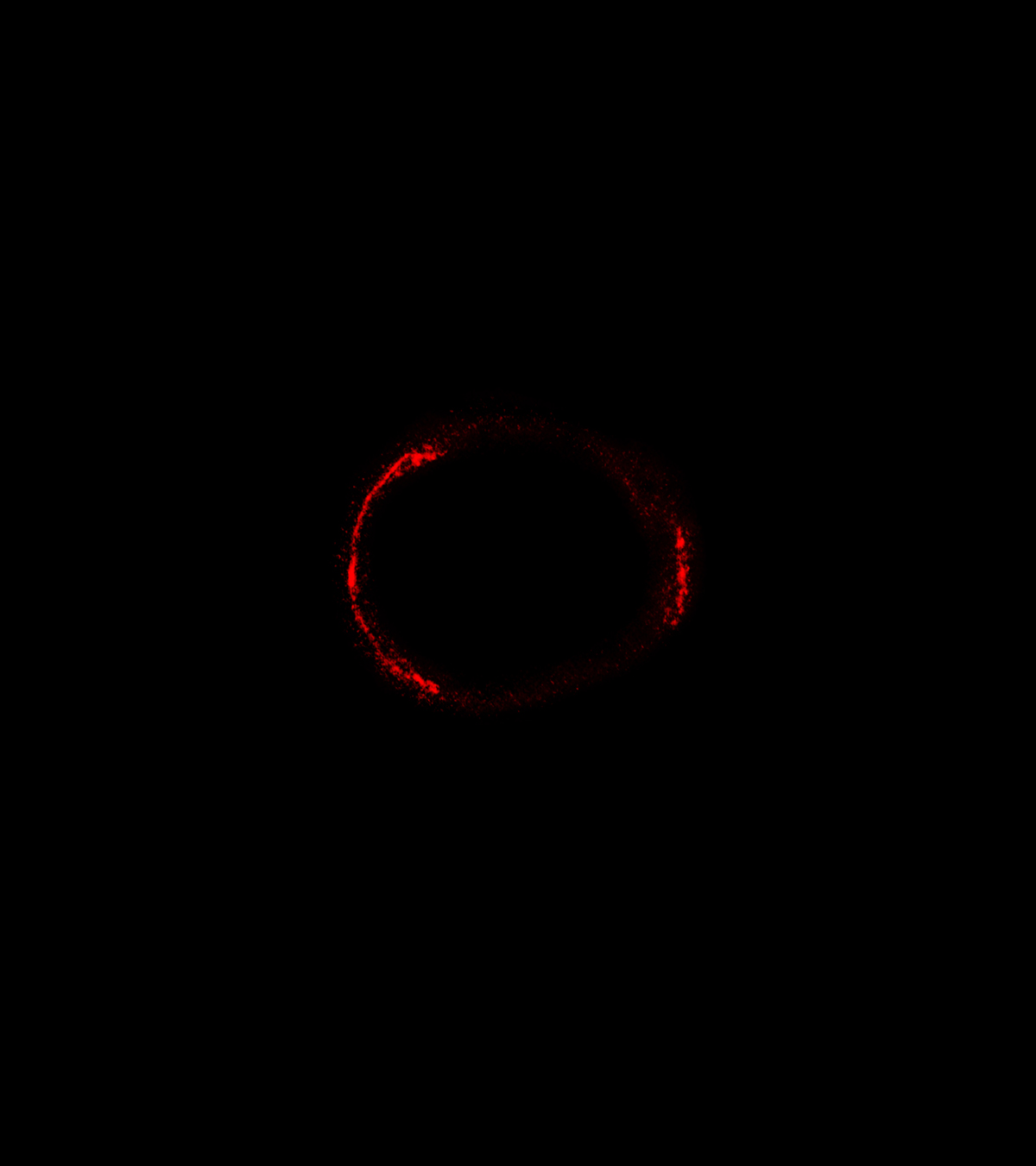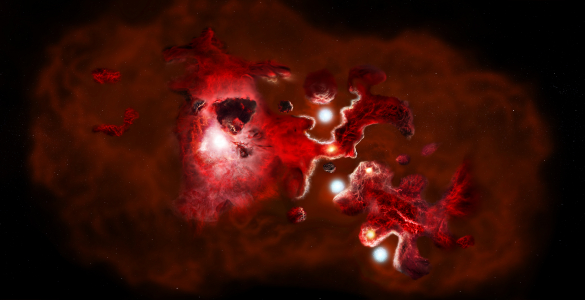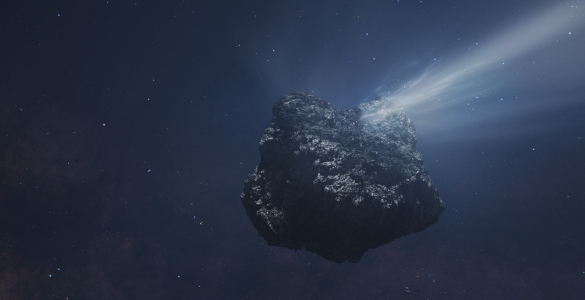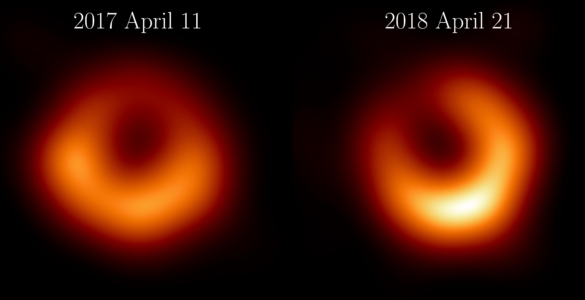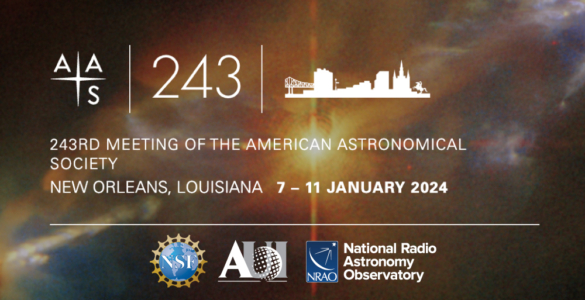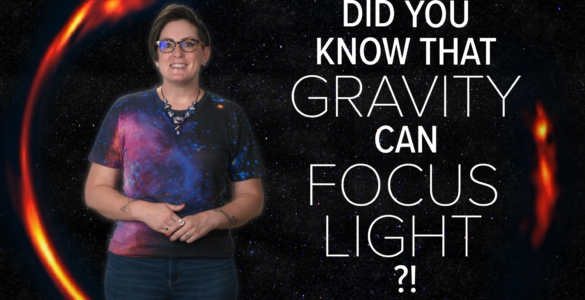Astronomers have discovered that a distant galaxy — seen from Earth with the aid of a gravitational lens — appears like a cosmic ring, thanks to the highest resolution images ever taken with the Atacama Large Millimeter/submillimeter Array (ALMA).
Forged by the chance alignment of two distant galaxies, this striking ring-like structure is a rare and peculiar manifestation of gravitational lensing as predicted by Albert Einstein in his theory of general relativity.
Gravitational lensing occurs when a massive galaxy or cluster of galaxies bends the light emitted from a more distant galaxy, forming a highly magnified, though much distorted image. In this particular case, the galaxy known as SDP.81 (its formal name is HATLAS J090311.6+003906) and an intervening galaxy line up so perfectly that the light from the more distant one forms a nearly complete circle as seen from Earth.
Discovered by the Herschel Space Observatory, SDP.81 is an active star-forming galaxy nearly 12 billion light-years away, seen at a time when the Universe was only 15 percent of its current age. It is being lensed by a massive foreground galaxy that is a comparatively nearby 4 billion light-years away.
“Gravitational lensing is used in astronomy to study the very distant, very early Universe because it gives even our best telescopes an impressive boost in power,” said ALMA Deputy Program Scientist Catherine Vlahakis. “With the astounding level of detail in these new ALMA images, astronomers will now be able to reassemble the information contained in the distorted image we see as a ring and produce a reconstruction of the true image of the distant galaxy.”
The new SDP.81 images were taken in October 2014 as part of ALMA’s Long Baseline Campaign, an essential program to test and verify the telescope’s highest resolving power, achieved when the antennas are at their greatest separation: up to 15 kilometers apart.
The highest resolution image of SDP.81 was made by observing the relatively bright light emitted by cosmic dust in the distant galaxy. This striking image reveals well-defined arcs in a pattern that hints at a more complete, nearly contiguous ring structure. Other slightly lower-resolution images, made by observing the faint molecular signatures of carbon monoxide and water, help complete the picture and provide important details about this distant galaxy.
Though this intriguing interplay of gravity and light in SDP.81 has been studied previously by other observatories, including radio observations with the Submillimeter Array and the Plateau de Bure Interferometer, and visible light observations with the Hubble Space Telescope, none has captured the remarkable details of the ring structure revealed by ALMA.
“The exquisite amount of information contained in the ALMA images is incredibly important for our understanding of galaxies in the early Universe,” said astronomer Jacqueline Hodge with the National Radio Astronomy Observatory in Charlottesville, Va. “Astronomers use sophisticated computer programs to reconstruct lensed galaxies’ true appearance. This unraveling of the bending of light done by the gravitational lens will allow us to study the actual shape and internal motion of this distant galaxy much more clearly than has been possible until now.”
For these observations, ALMA achieved an astounding maximum resolution of 23 milliarcseconds, which is about the same as seeing the rim of a basketball hoop atop the Eiffel Tower from the observing deck of the Empire State Building.
“It takes a combination of ALMA’s high resolution and high sensitivity to unlock these otherwise hidden details of the early Universe,” said ALMA Director Pierre Cox. “These results open a new frontier in astronomy and prove that ALMA can indeed deliver on its promise of transformational science.”
SDP.81 is one of five targets selected for study during the ALMA Long Baseline Campaign. The others include the protoplanetary disk HL Tau, the asteroid Juno, the star Mira, and the quasar 3C138. Papers describing these publicly available data and the overall outcome of the ALMA Long Baseline Campaign are to be published in the Astrophysical Journal, Letters.
# # #
The National Radio Astronomy Observatory is a facility of the National Science Foundation, operated under cooperative agreement by Associated Universities, Inc.
The Atacama Large Millimeter/submillimeter Array (ALMA), an international astronomy facility, is a partnership of the European Organisation for Astronomical Research in the Southern Hemisphere (ESO), the U.S. National Science Foundation (NSF) and the National Institutes of Natural Sciences (NINS) of Japan in cooperation with the Republic of Chile. ALMA is funded by ESO on behalf of its Member States, by NSF in cooperation with the National Research Council of Canada (NRC) and the National Science Council of Taiwan (NSC) and by NINS in cooperation with the Academia Sinica (AS) in Taiwan and the Korea Astronomy and Space Science Institute (KASI). ALMA construction and operations are led by ESO on behalf of its Member States; by the National Radio Astronomy Observatory (NRAO), managed by Associated Universities, Inc. (AUI), on behalf of North America; and by the National Astronomical Observatory of Japan (NAOJ) on behalf of East Asia. The Joint ALMA Observatory (JAO) provides the unified leadership and management of the construction, commissioning and operation of ALMA.
The paper, “ALMA Long Baseline Observations of the Strongly Lensed Submillimeter Galaxy HATLAS J090311.6+003906 at z=3.042,” is located here: http://arxiv.org/abs/1503.02652
Contact: Charles Blue, Public Information Officer
(434) 296-0314; cblue@nrao.edu






